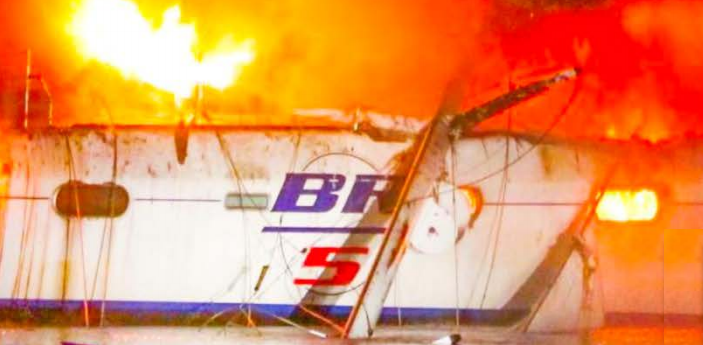The NTSB issued an investigation report on the fire incident onboard the uninspected sailing vessel ‘Best Revenge 5’, while docked at a marina pier in Falmouth Inner Harbor in Falmouth, Massachusetts, in July 2017.
The incident
At about 0130, on 11 July 2017, the ‘Best Revenge 5’ caught fire while docked at a marina pier in Falmouth Inner Harbor. The vessel’s two crew members escaped the burning vessel and attempted to fight the fire but could not contain it, and local firefighters later extinguished it.
One crew member sustained second- and third-degree burns to the arms, hands, and feet. An oil sheen was observed in the immediate vicinity of the vessel after the fire but was contained by a floating boom.
Damage to the Best Revenge 5 (which was declared a constructive total loss), to a vessel docked next to it, and to the pier totaled an estimated $1,508,000.
Probable cause
The National Transportation Safety Board determines that the probable cause of the fire aboard the uninspected sailing vessel Best Revenge 5 and on its pier was an electrical fault in an accommodation space on the vessel.
Analysis
After the fire, marina personnel reported that the circuit breaker powering the dock pedestal from shore was in the “tripped” position (electrically disconnected as a protection measure) and that the two shore power circuit breakers onboard the vessel (fed by cables from the pedestal) were undamaged and tripped to the “off” position as well.
They concluded that the vessel “may have been [electrically] powered at the time of the fire.” The S-E-A report concluded that the fire’s origin, ignition sources, and available fuels were as follows:
… the fire originated on the port side of the vessel; specifically, in the area between the port side lavatory, aft stateroom closet, and port side hull, in the area of the shore power pedestal. The only potential ignition sources identified within the area of origin were the shore power pedestal, electrical conductors/ components in the lavatory, aft-port stateroom closet, and area above the aft port lavatory/shower area. The only fuels identified were the fiberglass hull, insulation, and ordinary combustibles within the area of origin. The report noted that both equipment and conductors that may have been affected by the lightning strike (which occurred a month earlier in Bermuda) were “located in the general origin area of the fire.
The report concluded that equipment or conductor failure “due to lightning damage cannot be eliminated as a possible cause of the fire.” Similarly, the shore power pedestal “cannot be eliminated as a cause of the fire” due to several missing components that were unable to be examined. Ultimately, a specific cause of the fire could not be identified “due to multiple ignition scenarios that cannot be eliminated.”
If the shore power pedestal was the source of the fire, it would have had to first have an electrical fault resulting in ignition of the pedestal’s wire insulation and plastic casing. The ensuing pedestal fire would have had to reach a sufficient intensity to ignite the vessel’s paint, fiberglass, and resin on the portside hull through direct flame impingement or radiant heat.
Burn marks on the dock around the power pedestal, however, did not indicate that the pedestal was fully engulfed in fire on all sides. Additionally, the damaged remnants of the power pedestal indicated an uneven burn with the areas farthest away from the boat less affected by the fire.
Therefore, considering the size of the fire that would have been required to ignite the adjacent vessel, the burn pattern around the pedestal, and the asymmetric pedestal remains, along with witness statements, it is less likely that the fire damage to the dock and pedestal was the result of a fire originating within the pedestal but rather more likely from the radiant heat from a fire located on the vessel.
Explore more herebelow:





























































